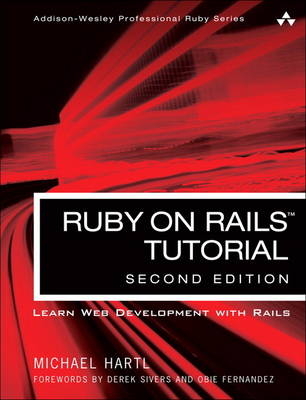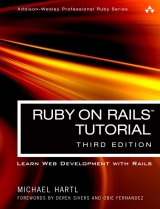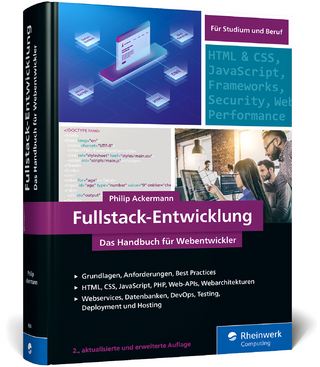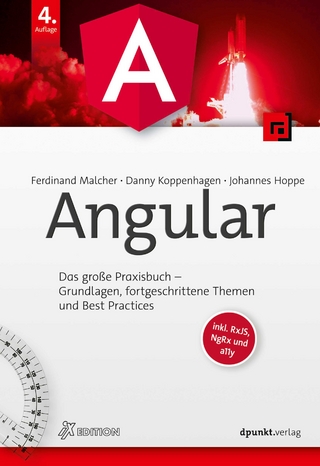
Ruby on Rails Tutorial
Addison-Wesley Educational Publishers Inc (Verlag)
978-0-321-83205-4 (ISBN)
- Titel erscheint in neuer Auflage
- Artikel merken
—Peter Cooper, Editor of Ruby Inside
Using Rails, developers can build web applications of exceptional elegance and power. Although its remarkable capabilities have made Ruby on Rails one of the world’s most popular web development frameworks, it can be challenging to learn and use. Ruby on Rails™ Tutorial, Second Edition, is the solution. Best-selling author and leading Rails developer Michael Hartl teaches Rails by guiding you through the development of your own complete sample application using the latest techniques in Rails web development. The updates to this edition include all-new site design using Twitter’s Bootstrap; coverage of the new asset pipeline, including Sprockets and Sass; behavior-driven development (BDD) with Capybara and RSpec; better automated testing with Guard and Spork; roll your own authentication with has_secure_password; and an introduction to Gherkin and Cucumber.
You’ll find integrated tutorials not only for Rails, but also for the essential Ruby, HTML, CSS, JavaScript, and SQL skills you’ll need when developing web applications. Hartl explains how each new technique solves a real-world problem, and he demonstrates this with bite-sized code that’s simple enough to understand, yet novel enough to be useful. Whatever your previous web development experience, this book will guide you to true Rails mastery.
This book will help you
Install and set up your Rails development environment
Go beyond generated code to truly understand how to build Rails applications from scratch
Learn test-driven development (TDD) with RSpec
Effectively use the Model-View-Controller (MVC) pattern
Structure applications using the REST architecture
Build static pages and transform them into dynamic ones
Master the Ruby programming skills all Rails developers need
Define high-quality site layouts and data models
Implement registration and authentication systems, including validation and secure passwords
Update, display, and delete users
Add social features and microblogging, including an introduction to Ajax
Record version changes with Git and share code at GitHub
Simplify application deployment with Heroku
Michael Hartl is the author of the Ruby on Rails™ Tutorial, the leading introduction to web development with Ruby on Rails. His prior experience includes writing and developing RailsSpace, an extremely obsolete Rails tutorial book, and developing Insoshi, a once-popular and now-obsolete social networking platform in Ruby on Rails. In 2011, Michael received a Ruby Hero Award for his contributions to the Ruby community. He is a graduate of Harvard College, has a Ph.D. in Physics from Caltech, and is an alumnus of the Y Combinator entrepreneur program.
Foreword to the First Edition by Derek Sivers xv
Foreword to the First Edition by Obie Fernandez xvii
Acknowledgments xix
About the Author xxi
Chapter 1: From Zero to Deploy 1
1.1 Introduction 3 1.2 Up and Running 9
1.3 Version Control with Git 27
1.4 Deploying 39
1.5 Conclusion 43
Chapter 2: A Demo App 45
2.1 Planning the Application 45
2.2 The Users Resource 49
2.3 The Microposts Resource 63
2.4 Conclusion 74
Chapter 3: Mostly Static Pages 77
3.1 Static Pages 82 3.2 Our First Tests 93
3.3 Slightly Dynamic Pages 103
3.4 Conclusion 114
3.5 Exercises 114
3.6 Advanced Setup 117
Chapter 4: Rails-Flavored Ruby 129
4.1 Motivation 129
4.2 Strings and Methods 134
4.3 Other Data Structures 142
4.4 Ruby Classes 153
4.5 Conclusion 164
4.6 Exercises 164
Chapter 5: Filling in the Layout 167
5.1 Adding Some Structure 167
5.2 Sass and the Asset Pipeline 187
5.3 Layout Links 197
5.4 User Signup: A First Step 211
5.5 Conclusion 215
5.6 Exercises 217
Chapter 6: Modeling Users 221
6.1 User Model 222
6.2 User Validations 236
6.3 Adding a Secure Password 254
6.4 Conclusion 267
6.5 Exercises 268
Chapter 7: Sign Up 271
7.1 Showing Users 271
7.2 Signup Form 292
7.3 Signup Failure 303
7.4 Signup Success 312
7.5 Conclusion 321
7.6 Exercises 321
Chapter 8: Sign In, Sign Out 325
8.1 Sessions and Signin Failure 325
8.2 Signin Success 343
8.3 Introduction to Cucumber (Optional) 363
8.4 Conclusion 371
8.5 Exercises 372
Chapter 9: Updating, Showing, and Deleting Users 373
9.1 Updating Users 373
9.2 Authorization 385
9.3 Showing All Users 396
9.4 Deleting Users 413
9.5 Conclusion 422
9.6 Exercises 424
Chapter 10: User Microposts 429
10.1 A Micropost Model 429
10.2 Showing Microposts 445
10.3 Manipulating Microposts 454
10.4 Conclusion 479
10.5 Exercises 480
Chapter 11: Following Users 483
11.1 The Relationship Model 484
11.2 A Web Interface for Following Users 503
11.3 The Status Feed 529
11.4 Conclusion 539
11.5 Exercises 543
Index 545
| Erscheint lt. Verlag | 9.8.2012 |
|---|---|
| Verlagsort | New Jersey |
| Sprache | englisch |
| Maße | 179 x 231 mm |
| Gewicht | 920 g |
| Themenwelt | Schulbuch / Wörterbuch |
| Mathematik / Informatik ► Informatik ► Programmiersprachen / -werkzeuge | |
| Mathematik / Informatik ► Informatik ► Web / Internet | |
| ISBN-10 | 0-321-83205-1 / 0321832051 |
| ISBN-13 | 978-0-321-83205-4 / 9780321832054 |
| Zustand | Neuware |
| Haben Sie eine Frage zum Produkt? |
aus dem Bereich



